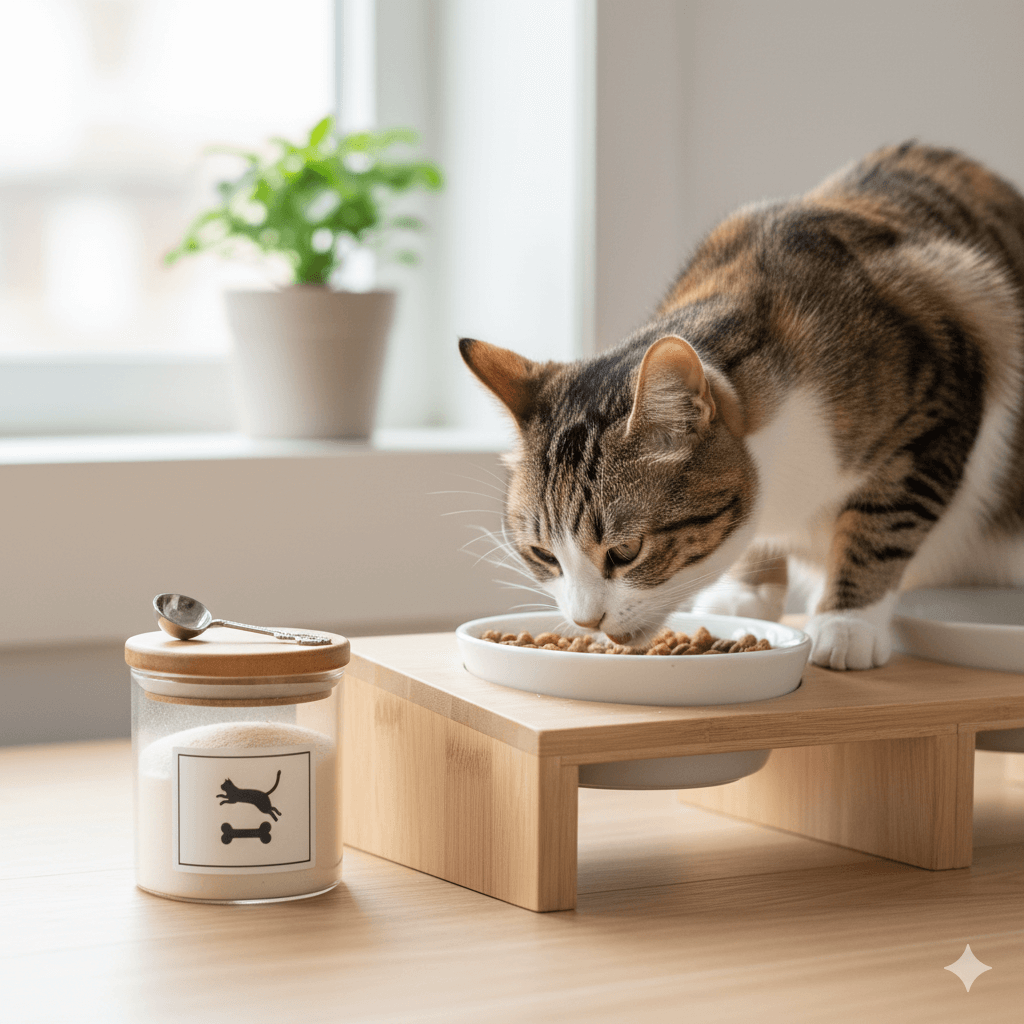Why Does My Cat Keep Peeing in the Same Spot?
Cats are known for their cleanliness and precision, so when your feline friend starts peeing in the same spot repeatedly, it can be both frustrating and confusing. Whether you’re a seasoned cat owner or new to the world of pets, this behavior can leave you scratching your head. Understanding why this happens is the first step toward resolving the issue. In this blog post, we’ll explore the reasons behind this behavior, offer practical solutions, and help you restore harmony to your home.
Common Reasons Behind Your Cat’s Behavior
Let’s dive into some of the most common reasons why your cat might be peeing in the same spot. These insights will help you identify potential triggers and address them effectively.
Territorial Marking
Cats often use urine to mark their territory. If there are other pets in the house or even outdoor animals nearby, your cat may feel the need to assert dominance.Stress or Anxiety
Changes in the household, such as moving furniture, introducing a new pet, or loud noises, can stress your cat. Stress-related behaviors often manifest as inappropriate urination.Health Issues
Urinary tract infections, bladder stones, or kidney problems can cause discomfort and lead to repeated peeing in one area. It’s important to rule out medical causes early on.Litter Box Problems
If your cat finds the litter box unclean, uncomfortable, or poorly located, they may avoid using it altogether.Preference for Certain Surfaces
Some cats develop preferences for specific textures or surfaces, such as carpet or tile, which can influence where they choose to pee.
Understanding these reasons is crucial to addressing the root cause of your cat’s behavior. By identifying the underlying issue, you can take steps to resolve it and prevent future incidents.
How to Address the Problem
Now that we’ve explored the potential causes, let’s discuss actionable steps you can take to stop your cat from peeing in the same spot. Here are some effective strategies:
Clean the Area Thoroughly
Use an enzymatic cleaner to eliminate any lingering odors. Cats are drawn to areas that smell like their urine, so thorough cleaning is essential.Provide Multiple Litter Boxes
If you have more than one cat, ensure there’s at least one litter box per cat plus an extra one. This reduces competition and encourages proper litter box use.Create a Stress-Free Environment
Minimize changes in your cat’s routine and provide safe spaces where they can retreat if they feel anxious.Consult a Veterinarian
Schedule a check-up to rule out any underlying health issues. Early diagnosis can prevent complications and ensure your cat’s well-being.Experiment with Litter Types
Try different types of litter to see if your cat prefers a certain texture or scent. Some cats are picky about their litter choices.
By implementing these strategies, you can create a supportive environment for your cat and reduce the likelihood of repeated accidents.
Check this guide 👉My Cat Peed on My Bed Right in Front of Me: Best 7 Tips!
Check this guide 👉Why Is My Cat Peeing on My Clothes? Best 7 Behavior Tips!

Preventive Measures | Benefits |
|---|---|
Clean affected areas regularly | Prevents odor-based attraction |
Use multiple litter boxes | Reduces territorial disputes |
Maintain a stress-free home | Lowers anxiety-related behaviors |
Schedule regular vet visits | Detects health issues early |
Experiment with litter options | Encourages proper litter box usage |
Signs That Indicate a Deeper Issue
While occasional accidents can happen, certain signs suggest that your cat’s behavior may stem from a deeper issue. Pay attention to these red flags:
Frequent Urination
If your cat is peeing more often than usual, it could indicate a urinary tract infection or diabetes.Straining While Urinating
Difficulty urinating or crying while in the litter box signals possible blockages or infections.Changes in Personality
Sudden aggression, withdrawal, or clinginess may point to physical discomfort or emotional distress.Avoidance of the Litter Box
Consistently avoiding the litter box despite cleaning efforts suggests dissatisfaction with its setup.Strong Odor in Urine
Unusually strong-smelling urine can indicate dietary issues or kidney problems.
Recognizing these signs early allows you to intervene promptly and seek professional help if needed.
Tips for Reinforcing Positive Behavior
Once you’ve addressed the root cause, reinforcing positive behavior ensures long-term success. Here are some tips to encourage your cat to use the litter box consistently:
Reward Good Behavior
Offer treats or praise when your cat uses the litter box correctly. Positive reinforcement strengthens desired habits.Maintain Consistency
Keep the litter box location and type consistent to avoid confusing your cat. Changes can disrupt their routine.Play and Engage Regularly
Regular playtime reduces stress and strengthens your bond with your cat, making them less likely to act out.Monitor Their Health
Stay vigilant about your cat’s overall health. A healthy cat is less prone to behavioral issues.Be Patient
Behavioral changes take time. Stay calm and patient while working through this process with your furry friend.
By following these tips, you’ll foster a happier and healthier relationship with your cat.
Additional Tips for a Stress-Free Environment
Creating a stress-free environment is essential to preventing inappropriate urination. Cats are sensitive creatures, and even small changes can trigger anxiety. Here are some ways to ensure your home remains a safe haven for your feline friend:
Provide Vertical Spaces
Cats love to climb and observe their surroundings from above. Install cat trees or shelves to give them a sense of security.Minimize Loud Noises
Sudden or constant loud noises can startle your cat. Use white noise machines or close windows to reduce external disturbances.Introduce New Pets Gradually
If you’re adding another pet to the household, introduce them slowly to avoid overwhelming your cat.
A calm and predictable environment helps your cat feel secure, reducing the likelihood of stress-related behaviors like peeing outside the litter box.
Fun Activities to Keep Your Cat Engaged
Boredom can sometimes lead to undesirable behaviors, including inappropriate urination. Keeping your cat mentally and physically stimulated is a great way to redirect their energy positively. Try these activities:
Interactive Toys
Toys that mimic prey, such as feather wands or laser pointers, encourage exercise and mental stimulation.Puzzle Feeders
These toys make mealtime more engaging by requiring your cat to “hunt” for their food.Window Perches
Place a perch near a window so your cat can watch birds or other outdoor activities.
By incorporating these activities into your cat’s routine, you’ll help them stay entertained and less likely to act out through unwanted behaviors.
Building Trust Through Routine
Cats thrive on consistency, and establishing a predictable routine can strengthen your bond while reducing stress. Here’s how you can create a structured environment for your cat:
Set Regular Feeding Times
Feed your cat at the same times each day to establish a sense of stability.Dedicate Playtime
Schedule daily play sessions to ensure your cat feels loved and engaged.Stick to a Cleaning Schedule
Clean the litter box at consistent intervals to maintain hygiene and trust.
A reliable routine not only reassures your cat but also reinforces positive behaviors, making it easier to address and prevent issues like repeated accidents.
Frequently Asked Questions
Why does my cat keep peeing in the same spot even after I clean it?
Cats are attracted to areas that smell like their urine. Ensure you’re using an enzymatic cleaner to remove all traces of odor.
Could my cat’s diet affect their bathroom habits?
Yes, certain foods can irritate the bladder or change urine composition. Consult your vet for dietary recommendations.
How many litter boxes should I have?
The general rule is one litter box per cat plus one extra. For example, two cats need three litter boxes.
What if my cat still pees outside the box after trying everything?
Persistent issues may require veterinary attention to rule out chronic conditions or severe anxiety.
Can spraying deterrents help?
Yes, non-toxic deterrent sprays can discourage cats from revisiting problematic spots. Combine this with other strategies for best results.
Restoring Harmony with Your Feline Friend
Dealing with a cat who keeps peeing in the same spot can be challenging, but understanding the reasons behind this behavior makes it easier to address. From health concerns to environmental factors, identifying the root cause is key to finding a solution. By cleaning thoroughly, providing adequate resources, and consulting professionals when necessary, you can create a harmonious living space for both you and your cat. Remember, patience and persistence go a long way in nurturing a happy and healthy relationship with your beloved pet.
Understanding Bone Supplement for Cats: Best 7 Expert Tips! – Safe, vet-approved guidance for strong feline bones & balanced nutrition.
Bone Supplement for Dogs: Best 7 Expert Tips! – Expert guide to calcium, collagen & bone health for every life stage.
Understanding Can Cats Get Sunburn: Best 7 Expert Tips! – Protect your feline from UV damage with vet-backed prevention strategies.
How to Train a Seizure Alert Dog: Best 7 Expert Tips! – Learn expert-backed steps to nurture natural instincts into reliable, life-saving seizure alerts.





